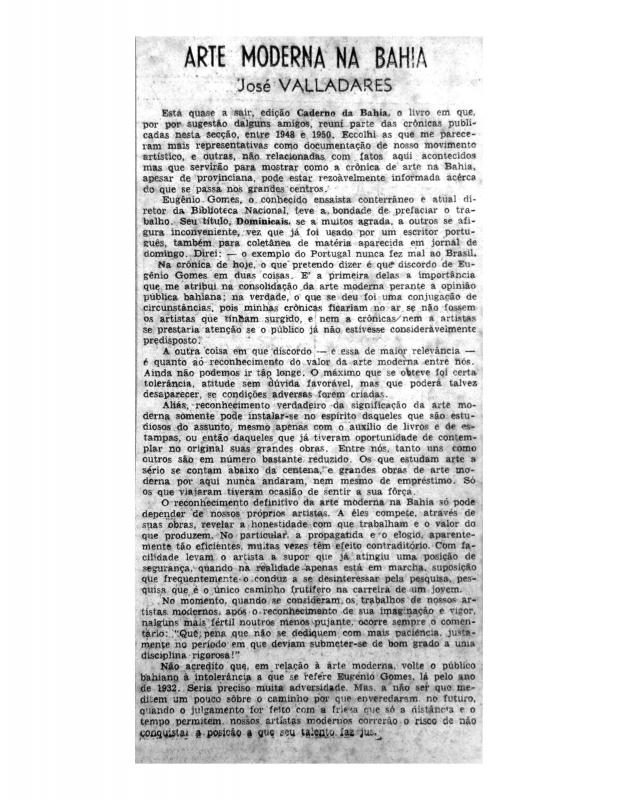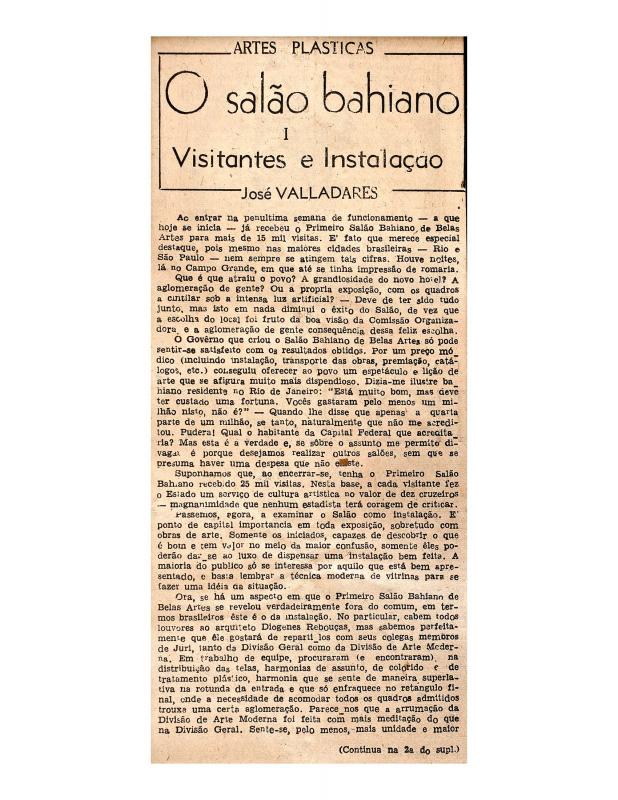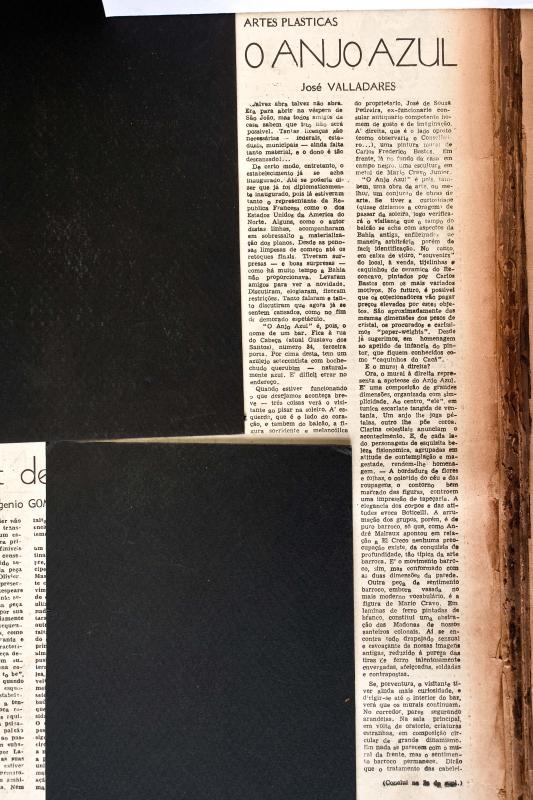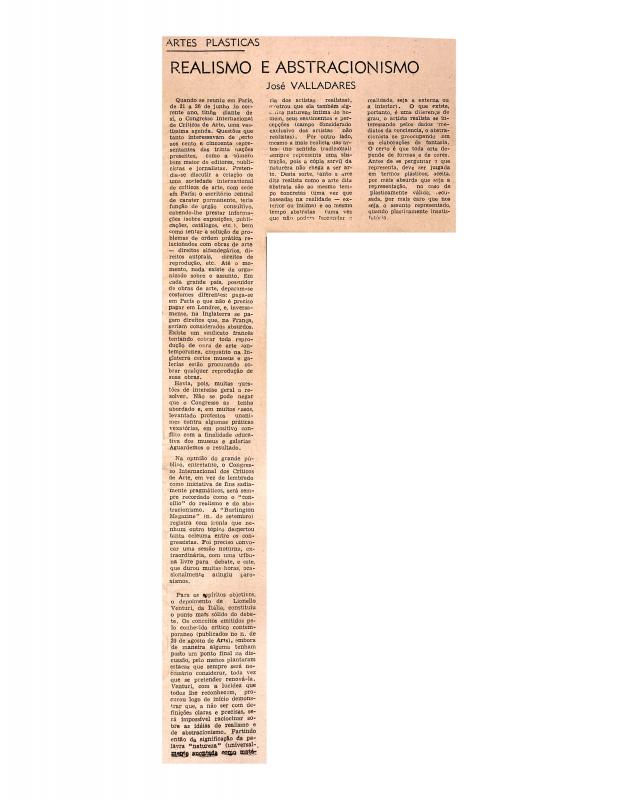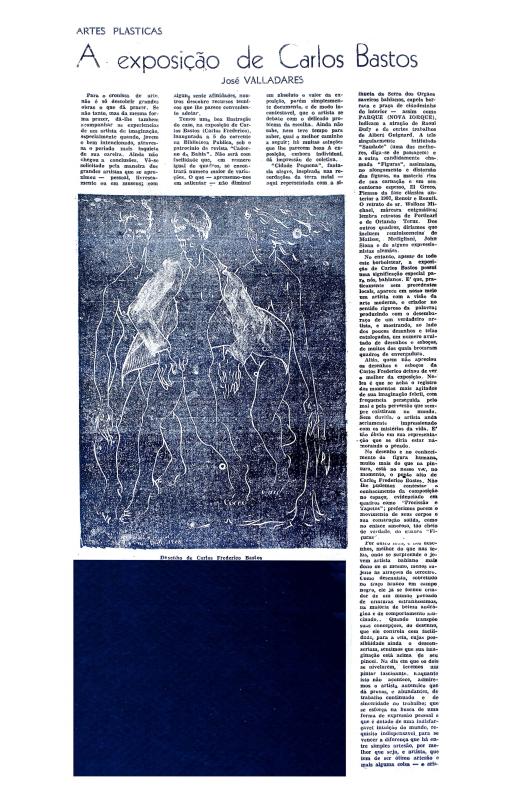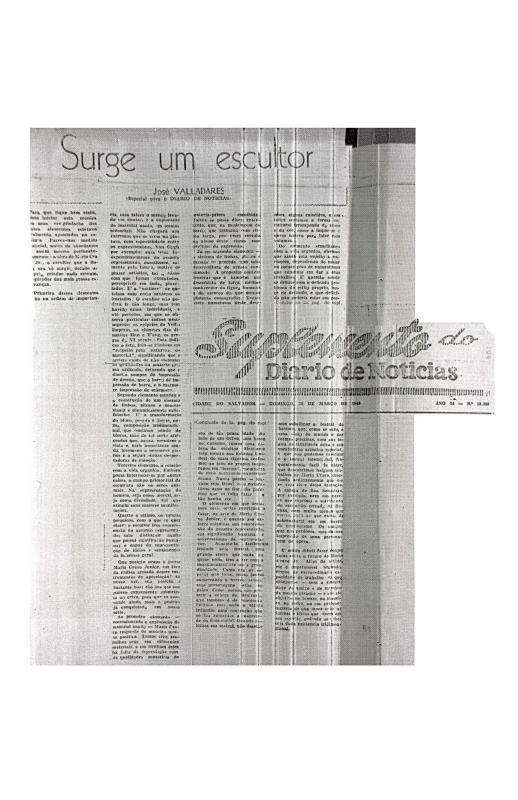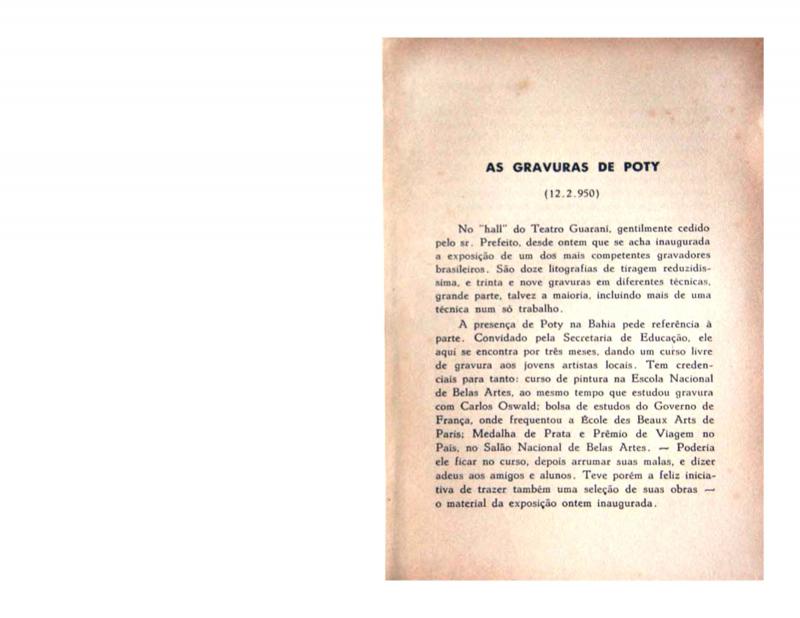This text provides an overview of the events central to the development of the “modernist” art movement in the city of Salvador, capital of the state of Bahia, in the forties and fifties, and of the leading figures in that emerging scene (Mário Cravo Jr., Carlos Bastos, and Genaro de Carvalho).
Journalist and critic José [Antonio do Prado] Valladares (1917–59) had a background in museology. He was the director of the Museu do Estado da Bahia (1939–43) and gave classes in aesthetics at the Universidade da Bahia, founded under that name in 1946 and later renamed the Universidade Federal da Bahia (UFBa). He also wrote reviews in the local press. In some cases, he was the first critic to discuss the work of young artists who were introducing Modern art to the region.
[For additional texts by José Valladares, see in the ICAA digital archive “Arte moderna na Bahia” (doc. no. 1110845); “O salão bahiano I: visitantes e instalação” (doc. no. 1110847); “O anjo azul” (doc. no. 1110844); “Realismo e abstracionismo” (doc. no. 1110848); “A exposição de Carlos Bastos” (doc. no. 1110695); on Mário Cravo Jr., “Surge um escultor” (doc. no. 1110701); and on Poty Lazzarotto, “As gravuras de Poty” (doc. no. 1110846)].

